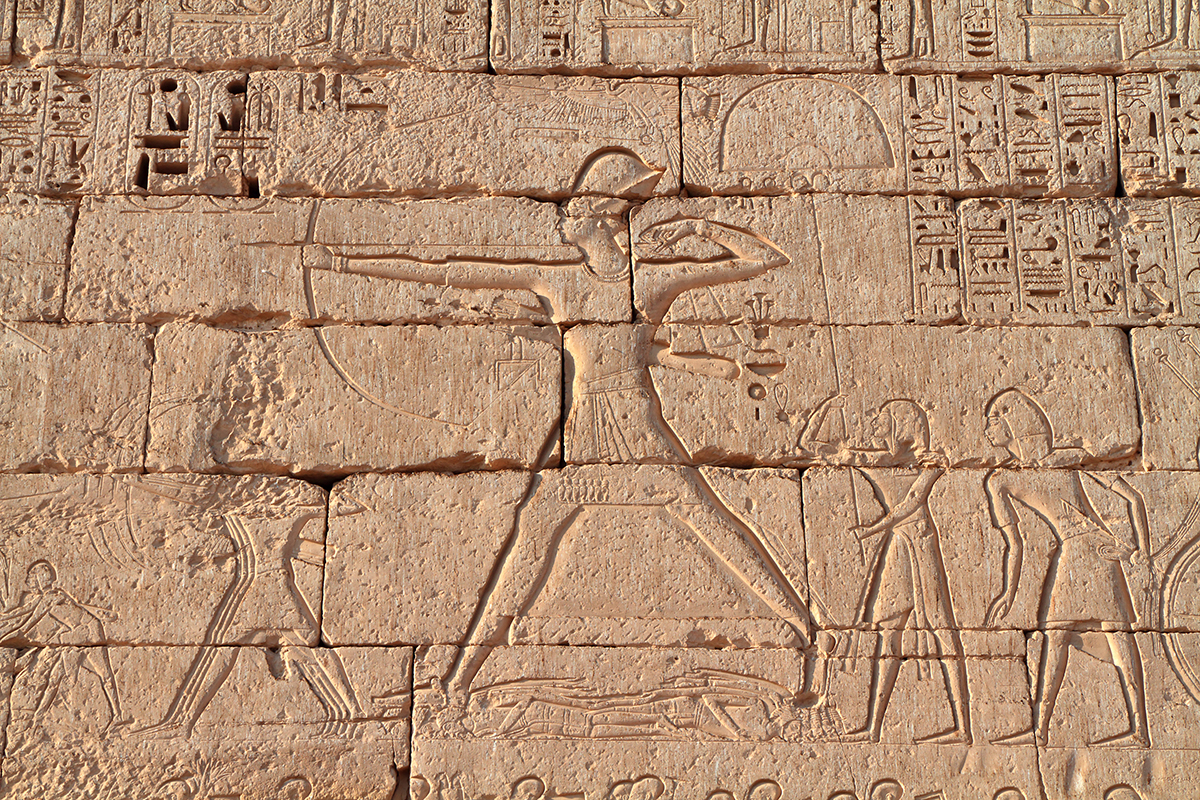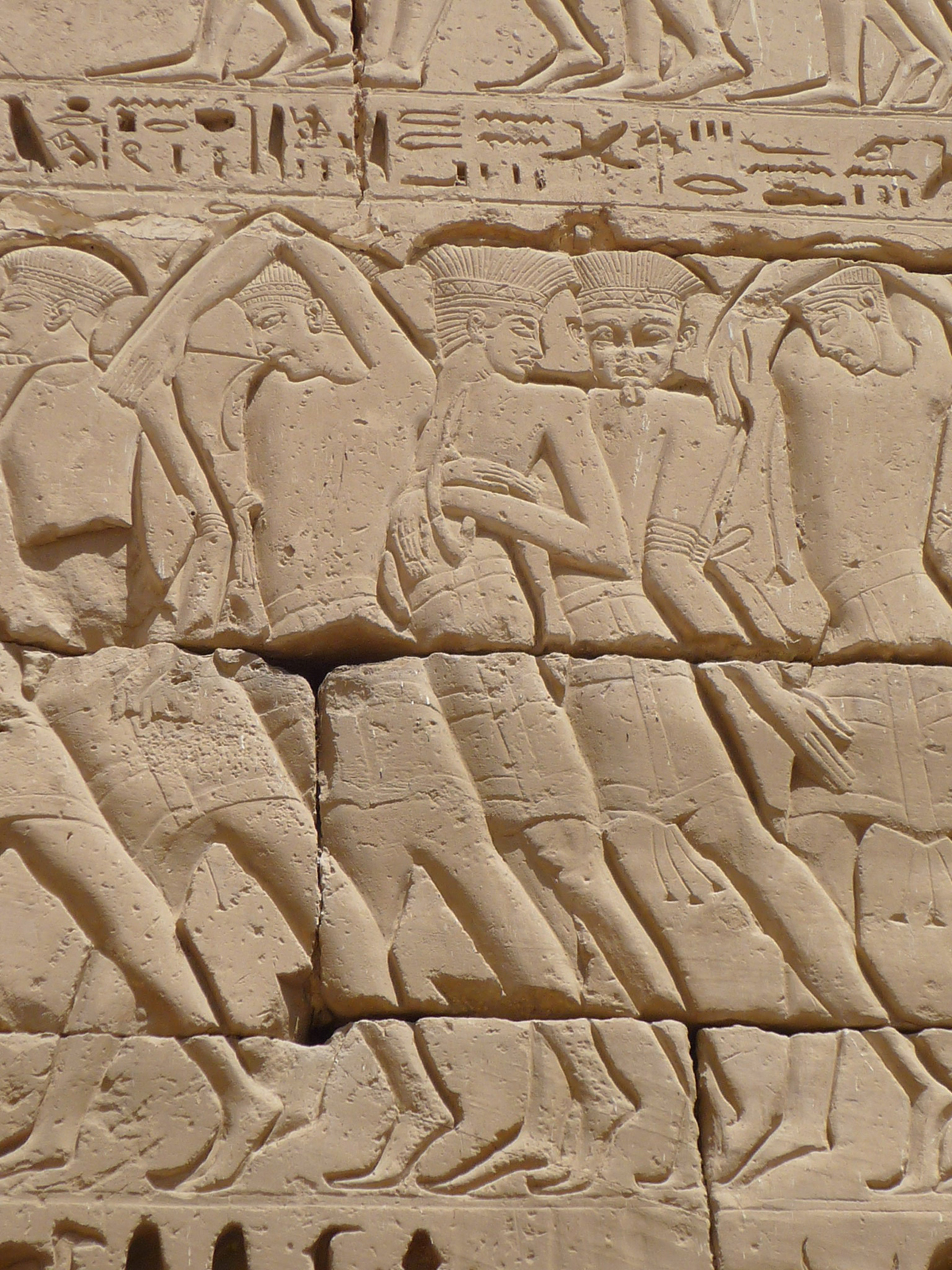

by Luke Chandler
Synopsis: Luke examines historical information about the Philistines and suggests they share many similarities with the ancient Greeks.
The Philistines are famous biblical bad guys. Though they dwelt alongside Judah and Dan in southwestern Canaan, there is no specific account of their interactions with Israel until Samson’s time. Why are they relative latecomers in the Bible?
From archaeological records, it appears the Philistines were originally among an immigrant coalition from the north that invaded Egypt in 1208 BC during the reign of Merneptah and again around 1180 BC in the time of Ramses III. Egypt defeated both invasions, and Ramses III posted victory inscriptions in his mortuary temple of Medinet Habu. Ramses III allowed the survivors to settle in Canaan, where they carved out territory and became the biblical Philistines.
The Egyptians identified the attackers with names such as the Peleset, Tjekker, and Shekelesh. Can we connect any of these with the Philistines? Look carefully, and we see the consonants of Peleset match closely with those of Philistine. From this, it seems the Peleset name was generically applied to the immigrant groups that settled in Canaan. Interestingly, the Bible labels a sub-group of Philistines that joined with David as the Pelethites (just one lightly-modified consonant from Peleset) in 2 Samuel 8:18, 15:18, 20:7, 1 Kings 1:38-44, and 1 Chronicles 18:17.
What does the Bible say about Philistine origins? Two Old Testament prophets say they came from a place called “Caphtor,” which is generally believed to be Crete or nearby Greek islands in the Aegean Sea.
Did I not bring up Israel from the land of Egypt, and the Philistines from Caphtor? (Amos 9:7, ESV).…The fathers look not back to their children, so feeble are their hands, because of the day that is coming to destroy all the Philistines… For the LORD is destroying the Philistines, the remnant of the coastland of Caphtor (Jer. 47:3-4).
David and Goliath, the most famous of Philistine stories, contains hints of the Philistines’ Greek/Aegean origins. The description of Goliath’s armor and weaponry resembles that of Greek soldiers in the Late Bronze Age, just before the invasions of Egypt.
(Goliath) had a helmet of bronze on his head, and he was armed with a coat of mail, and the weight of the coat was five thousand shekels (ca. 125 lbs.) of bronze. And he had bronze armor on his legs, and a javelin of bronze slung between his shoulders. The shaft of his spear was like a weaver’s beam, and his spear’s head weighed six hundred shekels (ca. 15 lbs.) of iron… (1 Sam 17:5-7).
The heavyweight of Goliath’s spearhead shows it was used for thrusting, like a long Greek spear, rather than throwing. Greek thrusting spears in that time were longer and heavier than the typical throwing spears of Canaan. The Hebrew language had no vocabulary word for that kind of foreign weapon, so the Bible text described it in visual terms, “like a weaver’s beam.”
Goliath’s challenge to a combat of champions also reflects the Philistines’ Aegean origins. The Iliad, a Greek epic poem about the Trojan War, tells of opposing armies selecting champions for one-on-one combat, such as Hector vs. Ajax and Achilles vs. Hector. Consider Goliath’s similar challenge to Saul’s army:
(Goliath) stood and shouted to the ranks of Israel, “Why have you come out to draw up for battle? … Choose a man for yourselves, and let him come down to me. If he is able to fight with me and kill me, then we will be your servants. But if I prevail against him and kill him, then you shall be our servants and serve us … Give me a man, that we may fight together” (1 Sam. 17:8-10).
This atypical style of combat played a part in unnerving Saul and the Israelites. David’s faith is all the more remarkable since it overcame not only Goliath’s size and experience but unfamiliar weaponry and a strange approach to warfare.
Though we remember the Philistines as enemies, we see in them the shadows of God’s unifying power. Some of the Cherethites, another sub-group*, joined Pelethites in allying with David. (2 Sam 15:18, et al.) Even before the gospel, people of faith were able to bring Gentiles to the knowledge of God.
* For identifying Cherethites with Philistines, note Ezekiel 25:16 and Zephaniah 2:5.
Author Bio: Luke has worked with the North Terrace Church of Christ in the Tampa, FL area for thirteen years. He leads tours to the Bible Lands and has taken part in nine archaeological expeditions in Israel. He plans to excavate at a site linked with both Judah and the Philistines this summer. Luke and his wife, Melanie, have five children. His website is lukechandler.wordpress.com. He may be reached at lukechandler@verizon.net.

Image 1: Battle scene, Medinet Habu, Theban Necropolis, Luxor, Egypt (istockphoto.com).
 wikimedia.org
wikimedia.org
Image 2: Captives from the invading group of Peleset, etc. after their defeat by Ramses. These peoples relocated to southern Canaan and eventually became the Philistines of David’s time (wikimedia.org).
